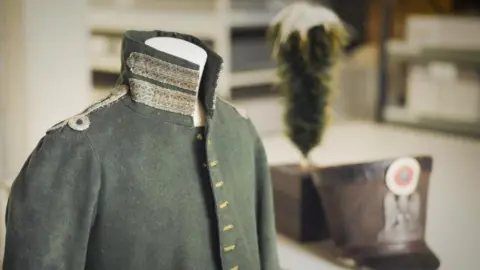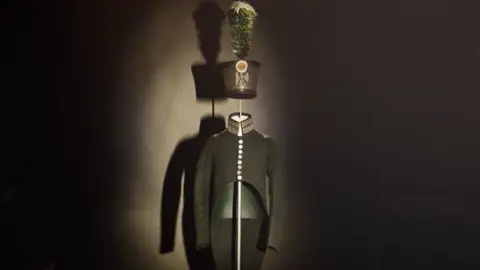Disguise used by sailor on the run goes on show
 Royal Museums Greenwich
Royal Museums GreenwichA uniform used by a local sailor to trick his way out of prison during the Napoleonic Wars has gone on display at the National Maritime Museum in London.
Charles Hare, from Lincolnshire, joined the Royal Navy aged 11 after his father died, and two years later he was taken prisoner when his ship was captured off the coast of France.
He was held for six years before he escaped, by then aged 19, using the uniform of a French customs officer as a disguise.
He travelled more than 500 miles to return to his mother in Lincoln, walking the last 30 miles from Grimsby because he had run out of money.
 Royal Museums Greenwich
Royal Museums GreenwichHe kept the clothing as a souvenir of his daring break for freedom in 1809, which followed months of planning.
The uniform came from an officer he befriended, despite the impersonation of a French official being regarded as espionage and punishable by immediate execution.
The Frenchman also hired a carriage to take him away from the jail and supplied him with false documents.
Historian and curator Katherin Gazzard said: “There’s a real, palpable sense of fear when he writes about his own escape. He knows that if he makes even one mistake, it could result in his death.”
Hare travelled by carriage to the River Rhine and then to the Dutch port of Rotterdam via a series of boats on the river. Some friendly fishermen agreed to row him out to the British warships in the harbour, from where he was able to make his way home to the village of Fillingham.
He went back to sea within months of being reunited with his family, was promoted to lieutenant and ended his career as a merchant captain.
More than 200 years later, the uniform and Hare’s written account of his ordeal have now been added to the Royal Museums Greenwich’s collection.
Listen to highlights from Lincolnshire on BBC Sounds, watch the latest episode of Look North or tell us about a story you think we should be covering here.
